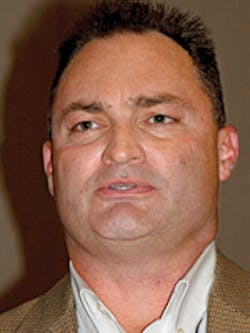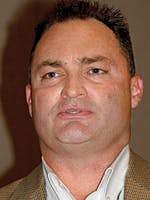When most people think of occupational fraud, they think of Bernie Madoff, the admitted operator of a Ponzi scheme that is regarded as the largest fraud in our country’s history.
Or Enron, where systematic accounting fraud led to the dissolution of the Arthur Andersen accounting firm, the enactment of the Sarbanes-Oxley Act of 2002, and the convictions of Ken Lay and Jeff Skilling for conspiracy, fraud, and insider trading.
We don’t hear about the small-scale, low-profile fraud that plagues businesses.
According to a recent Wall Street Journal article, 64% of small businesses experienced employee theft, 40% of the thefts were cash, and $20,000 was the average amount stolen over time.
“A lot of people think monetary losses, but it can also be inventory,” said Tim Reynolds, a principal of CliftonLarsonAllen. “It can be the guy in the parts department taking stuff out the back door. $20,000 probably doesn’t seem like a lot, but I don’t think anybody here wants to write a check for $20,000.”
In his presentation, “Understanding Potentially Fraudulent Threats Against Your Dealership,” Reynolds gave the textbook definition of occupational fraud: The use of one’s occupation for personal enrichment through the deliberate misuse or misapplication of the employing organization’s resources or assets.
“Bottom line: It’s just simply stealing,” he said.
Why do people commit fraud?
• Pressure—reason to commit fraud. “Most of the time, pressure comes from a significant financial need or problem. Substance abuse is another common pressure. Often this need or problem is non-sharable in the eyes of the fraudster.”
• Opportunity—the ability to commit fraud. “Opportunity is created by weak internal controls, poor oversight, and/or through use of one’s position and authority. Opportunity is the piece that organizations have the most control over.”
• Rationalization—justifying the fraud. “ ‘I’m just ‘borrowing.’ ‘I work hard. I deserve more.’ ‘Everyone else is doing it.’ There is nowhere else to go, no help from the outside.”
Reynolds cited the example of Associated Wholesale Grocers, where property and lease administration manager Mary Ellen Schorgl in 2012 was sentenced to 37 months in federal prison for her role in a bank fraud case that involved dummy companies and fraudulent bills for services that were never performed. Reynolds said she created false invoices for repairs and services on various properties and set up “dummy” companies owned by her spouse. The company paid invoices and Schorgl forged the endorsement, channeling funds back to companies owned by her spouse. An internal audit noted large discrepancies with vendor payments and stores noticed an increase in costs.
Reynolds said there are warning signs that should be noticed.
“Look for the red flags: significant changes in behavior patterns; criminal or questionable background; high personal debts or financial losses; inadequate income for lifestyle; addictions such as gambling or drugs; resentment of superiors and frustration with the job; emotional trauma in home or work life; or exerting unusual control over financial information, refusing assistance, rebuking questions, taking minimal, if any, vacation time,” he said.
There are some controls designed to prevent invalid transactions from being processed and assets from being misappropriated:
• Segregation of duties.
• Pre-approval of actions or transactions.
• Computer passwords and access controls.
• Job rotations and enforced vacation policies.
• Employee screening and training.
• Physical controls over assets.
• Mail control.
• Journal entry/ledger reclass reviews.
• CPA spot checks.
• Parts department controls.
There are some detective controls designed to identify errors or fraud in transactions that have already been processed:
• Surprise cash counts.
• Reconciliations.
• Internal audit.
• Annual vendor audit.
• Monitoring.
Reynolds said that to reduce the risk of fraud, organizations should seek to implement policies and procedures that respond to the elements of the fraud triangle by:
• Creating an ethical environment. “This involves investigating new hires and employees; performing drug tests; implementing an ethics policy; bonding employees; exit interviews; and prosecuting fraud perpetrators.
• Reducing opportunities to commit fraud. “This involves requiring periodic job rotation and mandatory vacations; instituting surveillance techniques; preparing monthly financial statements in a timely fashion; and implementing a whistleblower program.”
• Monitoring pressure on employees to commit fraud, and developing appropriate responses. “This involves performing drug tests; instituting appropriate personnel policies and procedures; knowing the ‘Red Flag’ warning signs; providing counseling services; and acting quickly.”
“How do we teach those without formal training to identify fraud?” he asked. “The key tips: be aware of the red flags; never overlook the obvious; ask questions until you receive a satisfactory and substantiated answer; and maintain a healthy dose of skepticism. Too much trust can be as devastating as no trust.” ♦
About the Author
Rick Weber
Associate Editor
Rick Weber has been an associate editor for Trailer/Body Builders since February 2000. A national award-winning sportswriter, he covered the Miami Dolphins for the Fort Myers News-Press following service with publications in California and Australia. He is a graduate of Penn State University.

